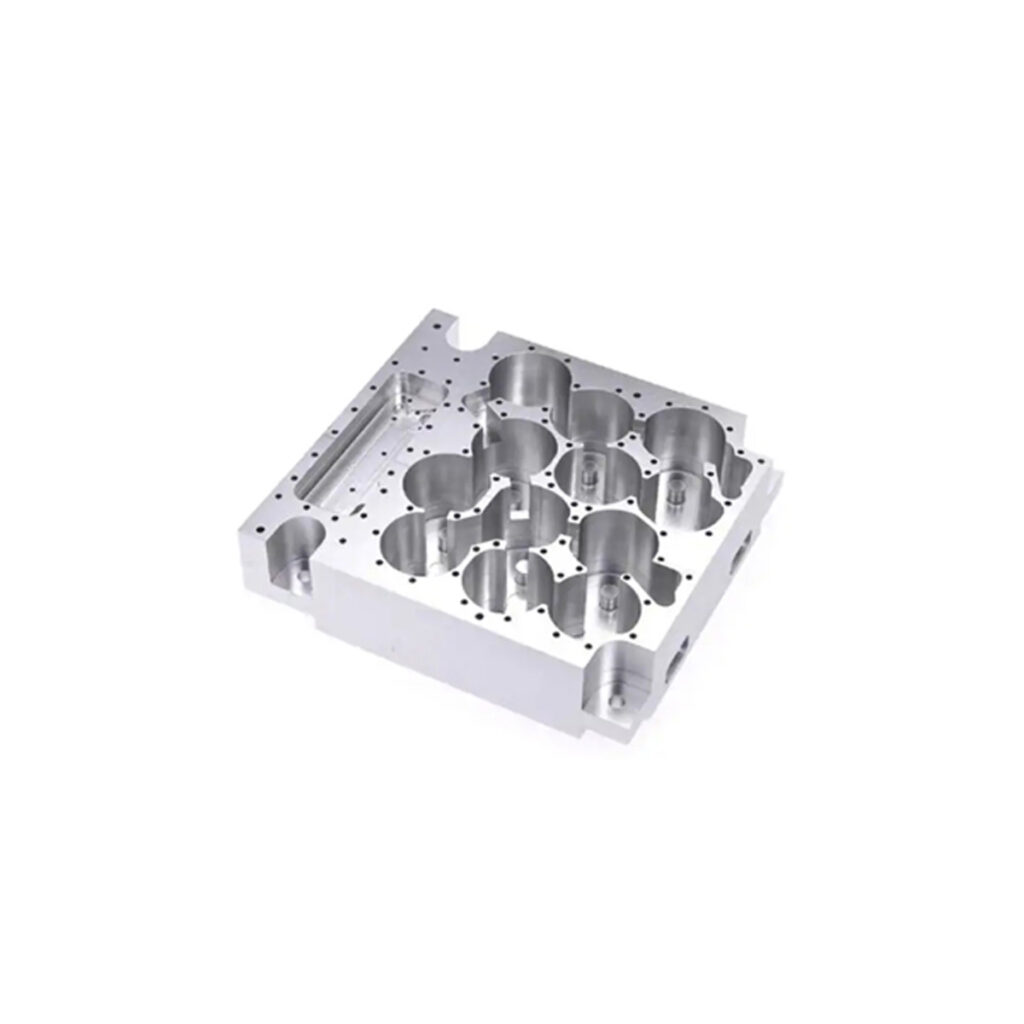In the high-stakes world of precision manufacturing, “close enough” is never good enough. A component may look perfect to the naked eye, but even a micron-level deviation from its design specifications can lead to assembly failures, performance issues, or catastrophic product recalls. How can manufacturers verify that a complex, machined part adheres perfectly to its digital blueprint?
The answer lies in a technology that has become the undisputed guardian of quality: the Coordinate Measuring Machine (CMM).
This article will demystify the CMM, explaining how it works, the different types available, and why it is an indispensable pillar of quality assurance in modern manufacturing, especially for industries where precision is non-negotiable.
Part 1: The Foundation – What is a CMM?
At its core, a Coordinate Measuring Machine is a device for measuring the physical geometrical characteristics of an object. It is a bridge between the digital world of CAD (Computer-Aided Design) and the physical world of the manufactured part.
A CMM can be described as a “reverse 3D printer.” While a 3D printer builds a part by adding material layer by layer based on a digital file, a CMM inspects a physical part by collecting data points from its surface and comparing them to the original digital model.
The fundamental principle is simple: the machine precisely maps the X, Y, and Z coordinates of points on a workpiece’s surface, creating a “point cloud” that accurately represents the part’s geometry in three-dimensional space.
Part 2: How Does a CMM Work? A Step-by-Step Breakdown
The process of using a CMM for quality control is methodical and precise.
Step 1: Programming and Setup
The process begins long before the probe touches the part. A CAD model of the ideal part is loaded into the CMM’s specialized software. An operator or quality engineer then creates a measurement plan within this software, specifying:
- Which features to measure (e.g., a bore’s diameter, a plane’s flatness, the distance between two holes).
- The number of data points to collect for each feature.
- The path the probe will take to avoid collisions.
The physical part is then meticulously secured on the CMM’s granite table. Granite is used for its exceptional stability and low thermal expansion, which ensures measurements are not affected by environmental changes or machine vibration.
Step 2: Probing and Data Collection
This is where the magic happens. A probe, mounted on the machine’s movable Z-axis, serves as the CMM’s “finger.” The machine’s structure allows this probe to be positioned accurately anywhere within its working volume.
- Tactile (Touch-Trigger) Probing: The most common method. The probe makes physical contact with the part. Upon contact, it triggers a signal, and the machine instantly records the X, Y, Z coordinate of that point. It then retracts, moves, and touches another point.
- Scanning Probing: A more advanced method where the probe remains in constant contact with the surface, collecting a continuous stream of thousands of data points per second. This provides a much denser and more comprehensive dataset, ideal for analyzing complex free-form surfaces.
The CMM’s ability to move the probe is facilitated by three core components, each governing a linear axis of movement:
- X-Axis: The longest, typically the bridge that moves along the table.
- Y-Axis: The cross-beam that moves along the bridge.
- Z-Axis: The spindle that moves vertically, carrying the probe.
Step 3: Data Analysis and Reporting
Once the required data points are collected, the CMM’s powerful software takes over. It analyzes the point cloud, constructing features from the collected points and comparing them to the nominal values from the original CAD model.
The output is a comprehensive report that clearly highlights:
- Actual vs. Nominal Dimensions: Shows the designed value versus the measured value.
- Deviation: The difference between actual and nominal.
- Tolerance Comparison: A clear pass/fail indication based on the specified tolerances.
- Graphical Color Maps: For scanned data, a 3D color map is often generated where colors visually represent deviation (e.g., red for areas above nominal, blue for below, and green for within tolerance).
Part 3: The Essential Role of CMMs in Precision Manufacturing
Why has the CMM become such a critical tool? Its value extends far beyond simple measurement.
1. Unmatched Accuracy and Repeatability
CMMs eliminate the human error and subjectivity associated with manual measurement tools like calipers and micrometers. A CMM will measure the same feature the same way, every time, regardless of the operator. This ensures consistent and reliable data, which is the foundation of trustworthy quality control.
2. Comprehensive Geometric Analysis
While hand tools are good for measuring basic dimensions (e.g., length, diameter), they are inadequate for verifying Geometric Dimensioning and Tolerancing (GD&T). CMMs excel at this. They can accurately measure and report on complex characteristics that are crucial for fit and function, such as:
- Flatness & Straightness
- Roundness & Cylindricity
- Parallelism & Perpendicularity
- Position (The true, most important characteristic for assembly)
- Runout & Concentricity
3. First Article Inspection (FAI) and Process Validation
Before mass production begins, a First Article Inspection is conducted. The CMM thoroughly measures a first-off part against all design specifications to ensure the manufacturing process—the CNC program, the tooling, the fixturing—is capable of producing a good part. This critical step prevents the production of thousands of defective components.
4. Statistical Process Control (SPC)
In ongoing production, CMMs are used to measure sample parts at regular intervals. This data is fed into SPC software to monitor the manufacturing process for trends. If measurements for a specific feature start to drift toward the upper or lower tolerance limit, it serves as an early warning. This allows manufacturers to make proactive adjustments to the process before any out-of-tolerance parts are produced, moving from simple inspection to true quality assurance.
5. Reverse Engineering
When a physical part exists without a digital model, a CMM (especially with a scanning probe) can be used to “reverse engineer” it. By capturing the precise geometry of the part, a new CAD model can be created for reproduction, redesign, or analysis.
Part 4: Types of CMMs – Choosing the Right Tool for the Job
The basic principle of CMMs remains the same, but different designs offer varying balances of accuracy, speed, and portability.
- Bridge CMM: The most common type. It offers an excellent combination of accuracy, versatility, and relatively large measuring volume. Ideal for inspection rooms.
- Cantilever CMM: Offers easy access from three sides but is generally less rigid than a bridge type, limiting its size and accuracy for very large parts.
- Gantry CMM: Designed for measuring very large objects, like entire car bodies or aircraft wings. The part sits on the floor, and the gantry structure moves over it.
- Articulating Arm CMM: A portable, manual CMM that resembles a robotic arm. It is less accurate than a bridge CMM but offers unparalleled flexibility for measuring large, in-situ components on the shop floor.
- Optical CMM / Vision Measuring Systems: These use a camera and image processing software instead of a tactile probe. They are exceptionally fast and accurate for measuring 2D features and flat parts but cannot measure depth or certain GD&T characteristics as effectively as tactile CMMs.
Conclusion: The CMM – More Than a Machine, a Strategic Asset
A Coordinate Measuring Machine is far more than a sophisticated measuring device. It is a strategic asset that builds a foundation of trust. It provides the irrefutable data needed to:
- Ensure Customer Confidence: Delivering parts with verified quality builds long-term partnerships.
- Reduce Scrap and Rework: Catching errors early saves significant time and money.
- Drive Continuous Improvement: The data from a CMM provides the insights needed to refine and optimize manufacturing processes.
In today’s global supply chain, where components are sourced from around the world and assembled into complex products, the CMM is the universal language of quality. It provides the objective, data-driven proof that a part is not just “good enough,” but is manufactured to the exacting standards required for success.



One Response
Hi, how have you been lately?